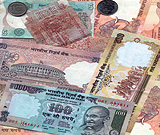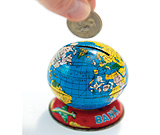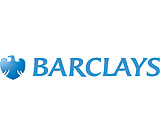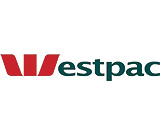|
A
MOTLEY COLLECTION OF BUSINESS AND ECONOMIC NEWS |
|

|
|
E C O N O M Y
|
 India’s GDP crosses US$ 1 trillion India’s GDP crosses US$ 1 trillion
India has joined the elite club of 12 countries with a trillion dollar economy, thanks to the continuing rally in rupee against the US dollar.
The country’s GDP crossed the trillion-dollar mark for the first time in history when the rupee appreciated to below 41-level against the US greenback, Swiss investment bank Credit Suisse said in a report.
Countries like the US, Japan, Germany, China, UK, France, Italy, Spain, Canada, Brazil and Russia have all breached trillion-dollar GDP level in the past.
The bank put the country’s GDP at around Rs 41,00,000 crore, which translates to slightly more than one trillion dollar at the current currency level of Rs 40.76 per dollar.
Besides, the country’s stock market capitalisation has risen to $944 billion, which is also closing fast on the trillion dollar level, it added.
The rupee has gained close to 13 per cent since moving past 47 a dollar in July-August last year. Continuing its uptrend for the fifth day in a row, the Indian currency today rose to as high as 40.72 to a dollar after breaching the 41-level to its highest level since May 1998.
|
|
|
 Rupee: Asia’s most performing currency Rupee: Asia’s most performing currency
The rising rupee is generating immense interest among traders in offshore markets. With hedge funds overseas taking short positions on dollar, but holding on to longer positions on rupee, treasury managers contend that the movement in the local currency is being substantially driven by offshore triggers apart from local reasons.
Bankers admit that the rupee is gaining increasing relevance in overseas markets and is slowly becoming a currency to reckon with, even outside Indian borders. The rupee has clearly outpaced most other Asian currencies due to strong capital inflows and is currently regarded as Asia’s most performing currency against the dollar.
According to a senior treasury manager with a private sector bank, “Within Asian markets, it is only the Indian rupee and the Chinese yuan which are outperforming other currencies. Now this is largely an outcome of the fact that other currencies like the Singaporean dollar, the Taiwan dollar and the South Korean won do not have to deal with the challenge of large foreign exchange inflows.”
|
|
|
|
B A N K I
N G N E W S |
 Foreign players make a beeline to grab a share of banking pie Foreign players make a beeline to grab a share of banking pie
With the Indian economy growing at over 8% for the past few years a host of foreign banks are looking at tapping this opportunity. A host of foreign banks including Royal Bank of Canada, Royal Bank of Scotland, UBS have applied or are in talks with the Reserve Bank of India to start their operations in the country.
This is even as established players like Societe Generale are looking at widening their activity to cover retail banking operations. The French bank could join other banking majors like Deutsche Bank and Barclays who have expanded to retail banking sector in recent times.
In recent years a host of foreign banks like Commonwealth Bank of Australia, Monte Dei Paschi Di Siena and Banche Popolari Unite of Italy, BBVA of Spain and Zurcher Kantonalbank of Switzerland have set up their representative offices in India.
Other foreign banks like Royal Bank of Scotland is also in talks with the RBI. The bank has already appointed Madan Menon who was earlier the co-CEO Barclays Capital India to head India operations. According to sources, the bank is planning to start off corporate and investment banking.
|
|
|
|
 Barclays launches retail banking Barclays launches retail banking
UK-based bank Barclays PLC has launched its Indian retail operations. The various products the bank will offer in the initial period include card services, personal loans, business loans and premier investment services. The personal loans offered by the bank would be offered for a maximum tenure of seven years as against the market average of five years.
With regards to having chosen India as the bank’s preferred location, Samir Bhatia, managing director, Barclays India and the Indian Ocean said, “India is a growing economy. We see it as a robust economy with the consumer class growing at over 30 per cent.”
“The bank would be catering people from different stratas. We are not an affluent bank. We are here to serve the masses. We are here to stay, to be a formidable force in the market,” he added. The bank has already infused capital amounting to $ 370 million for both retail and commercial banking out of which $70 million is for retail business.
It has received three licences and is setting up its initial retail outlets in Mumbai, Kancheepuram and Nelamangala near Bangalore. Bhatia further said, “Organically, we are open. We will try to get as many branches as we can.” He also negated the emphasis on fee-based income.
|
|
|
|
 Aussie banks look to set up shops in India Aussie banks look to set up shops in India
The booming consumer finance space and the growing opportunities in corporate finance is forcing foreign banks to set shop in India. The Australian banks have a particular interest in India on the back of the growing trade relations between the two countries and corporate flows.
After Macquire, the newest entrant is the Australian-based Westpac Institutional Bank. Westpac has opened a representative office in Mumbai after getting a license within three months. The bank has an alliance with Standard Chartered Bank (SCB), India.
“We have an alliance with Standard Chartered Bank for a year now. This alliance has helped SCB to serve the needs of Westpac’s clients in India. Similarly, Westpac takes care of the requirements of SCB’s clients in Australia and New Zealand,” said Philip Chronican, chief executive officer, Westpac Institutional Bank.
The SCB-Westpac alliance had helped the Tatas and Wipro to set up offices in Australia, providing them account management and cash management services. SCB had enabled Rio Tinto, the largest precious metals miners in the world to set shop in India.
“India is of prime interest to Westpac considering the rapid growth in trade relations between the two countries. As on March the trade flows between the countries stood at around $4 billion. Currently, we manage around 10 per cent of the flows. In the medium term, we want to increase this to 33 per cent,’’ added Chronican.
“We see business potential in trade finance and in particular, areas such as commodities, energy, services to the immigrant population and facilitating cross-border corporate flows and investments. We would look at upgrading the representative office to a branch at a later date when the market and regulations relax in 2009,’’ added Chronican.
“Westpac believes in organic growth. However, we have acquired banks in Australia and New Zealand. We believe that organic growth enables the managements to have greater control,’’ said Yogan Rasanayakam, general manager, Asia, Westpac.
The bank will continue with the SCB-Westpac alliance even when Westpac upgrades the representative office to a branch. This alliance is expected to generate good fee income.
|
|
|
|
|
FOREIGN INSTITUTIONAL INVESTORS
|
 FIIs bullish on India, pump in US$ 6 billion in calendar 2007 FIIs bullish on India, pump in US$ 6 billion in calendar 2007
Despite several factors indicating a relative slowdown in the emerging markets, foreign institutional investors (FIIs) continue to be bullish on India. They have pumped in a hefty $6 billion in equities to date in calendar 2007.
Last year, during the same period, the FIIs’ exposure to Indian equities was 25 per cent lower at $4.5 billion. These investors had invested $8 billion in the entire calendar 2006.
Market players said an appreciating rupee and a slide at the bourses since April played a key role in the increased inflows from the FIIs.
VK Sharma, director and head of research, Anagram Securities said, “Most of the buying by the FIIs in calendar 2007 has been during the second quarter (April-May to date) when the markets have undergone a long correction from the higher levels after peaking in February. Also, an 8-9% appreciation of the rupee in the last one-and-half month helped.” He said, if the Indian currency continued to strengthen against the greenback, the inflows might gather more pace and cross the all-time high mark of $10 billion witnessed in 2005.
But some analysts cautioned that rising interest rates and high inflation might pose a challenge to the economy, which in turn might adversely impact the profitability of India Inc.
Analysts said though Indian valuations were at a higher level, there was still room for companies to grow. Hence, more and more foreign funds were being deployed in Indian equities, they added.
|
|
more... |
|
|
|
|
June 2007
|
|

|
|
|
|